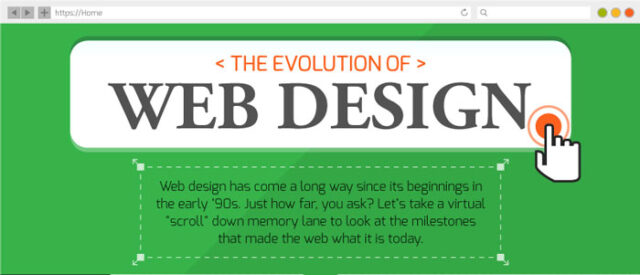
In the beginning, web design has minimal progress. Very quickly HTML has become more complex and more flexible allowing users to add images and tables on the website. With the appearing of CSS and Web server technology with the ability to rapidly adapt and respond to the basic user requirements (server-side scripting), web design undergoing a fast development. In 1993, the first web browser, Mosaic – enabled users to surf the Internet in a visual sense, and has enabled web technology to the general public – the creator is the National Center for Super Computing Applications (NCSA). This browser has enabled users to view text and graphics, but in a very limited schedule and arrangement which affected the ability to provide information. Graphic design and visual communication was very limited compared to current capabilities of web design.
History of web design may be conveniently divided into four main periods (generations), depending on the degree of development of the web sites and the complexity of the design site:
- The first period began with the development of the first free browser “Mosaic” and came to an end when HTML became widespread. Web sites design at that stage he was under the influence of many technological limitations, such as a slow modem connection and inability of service providers for fast data transfer.
- Unlike the first period, web design in the second period more looks professional and has some new features, including the icons instead of keys with words, banners, structured menu that represents a hierarchy of information. There was a need to adapt to the design for a particular screen resolution, 8bit or 24bit monitors. Even then the web designers started to pay attention to important factors such as the speed of downloading information and screen resolution. But the text was not easy to read because of the characteristics of the search and the speed of the Internet, and users were not interested in waiting a few minutes for the content display on the screen.
- The third generation of websites – web design had the main objective to deliver multimedia content, including sound, animation, 3D models. This stage is associated with the introduction of flash technology which has become very popular. Web designers use multimedia content in order to attract customers and visitors in accordance with the purpose of that particular site. Thus, the structure of the site and its navigation system is considered extremely important for website design, to allow users to find quickly what they’re looking for. The basic principle in the third stage was the strategy of “Aida”, attracting new visitors: keep visitors on the site longer, to awaken the desire to learn more about the site or company, to motivate visitors to contact particular website.
- The fourth generation has specific features such as an abundance of multi-media content and the possibility of ordering online. Today, websites are specifically developed for ecommerce, government, education, entertainment, business, etc., with the aim to fulfill the client’s request.
Below you can check infographic which shows the evolution of web design:














